Understanding market volatility in trading is essential for decision-making. Standard deviation is a vital tool for quantifying volatility objectively. It helps in evaluating risk levels and comparing outcomes to the average. Traders can leverage standard deviation to make well-informed decisions based on market volatility trends. If you desire to deepen your understanding of how standard deviation impacts trading strategies and risk management, exploring its calculation methods and interpretation of values would be beneficial.
Importance of Standard Deviation
Standard deviation stands as a fundamental statistical tool essential for comprehending market volatility dynamics and evaluating risk levels with precision and objectivity. In the domain of finance, particularly in trading, standard deviation plays an important role in quantifying outcomes relative to the average, thereby aiding in the assessment of market volatility.
By measuring the variability of data around the mean average, standard deviation provides valuable insights into risk assessment, enabling traders to make informed decisions. Traders utilize standard deviation to evaluate historical volatility, manage risk effectively, set stop-loss levels, and develop robust trading strategies.
Additionally, standard deviation allows for the analysis of market behavior, sentiment shifts, and trend reversals, offering traders a thorough understanding of market dynamics. Essentially, a deep understanding of standard deviation is imperative for market participants seeking to navigate the complexities of market volatility with confidence and precision.
Market Volatility Overview

Market volatility is a key aspect in trading that influences investment strategies and decision-making processes. Understanding how volatility impacts the market can help traders anticipate price movements and adjust their risk management strategies accordingly.
Volatility in Trading
Analyzing volatility in trading is essential for traders as it provides valuable insights into the degree of variation in an asset's price over time. Traders rely on statistical measures like standard deviation to quantify market volatility accurately.
Here are key points to understand volatility in trading:
- Volatility indicates the extent of price fluctuations in trading assets.
- Market volatility helps traders gauge the level of risk associated with a particular asset.
- High volatility suggests significant price variations, while low volatility implies price stability.
- Various factors such as economic events, news releases, and market sentiment influence market volatility.
Understanding these aspects of volatility is vital for traders to develop effective trading strategies and manage risk efficiently.
Impact on Strategies
Effective trading strategies are greatly influenced by the impact of market volatility on risk assessment and decision-making processes. Market volatility, as measured by standard deviation, plays a significant role in shaping trading strategies.
High volatility levels indicate increased risk and potential for wider price fluctuations, prompting traders to carefully consider their entry and exit points. By analyzing standard deviation ranges, traders can adapt their strategies to account for the uncertainty and potential market movements.
Understanding market volatility through standard deviation aids traders in identifying trends, reversals, and determining best stop-loss levels. The impact of volatility on trading strategies often necessitates adjustments in risk management techniques and position sizing to navigate the dynamic nature of the market effectively.
Standard Deviation Calculation Method
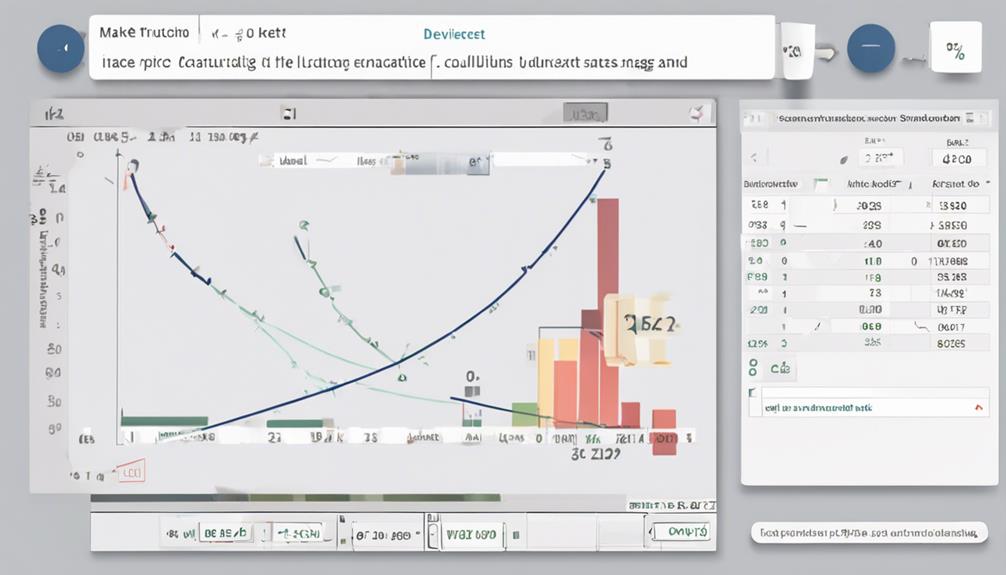
Utilizing historical data of past period closes and the Simple Moving Average (SMA), standard deviation is calculated through a method that involves determining squared differences and variance to gauge market volatility.
The process begins by finding the squared differences between each stock price's closing price and the SMA. These differences are then summed up and divided by the period to calculate the variance.
Next, to obtain the standard deviation, the square root of the variance is taken. The standard deviation formula integrates past closes and SMA values for computation.
This method provides a quantitative measure of how stock prices deviate from their average, indicating the level of volatility in the market. Understanding this calculation method is essential for traders and investors to assess and manage risks effectively.
Interpreting Standard Deviation Values
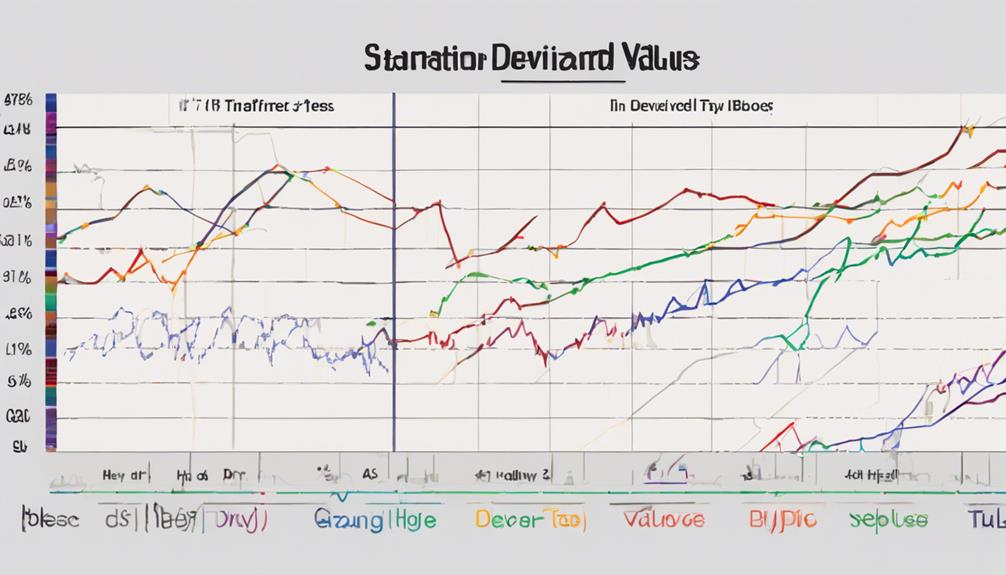
When examining standard deviation values in market analysis, an important aspect to take into account is their indication of the level of price volatility present in stock movements. Standard deviation values above 1 suggest higher volatility in price movements, indicating a wider range of potential price fluctuations.
A standard deviation of 1 signifies that approximately 68.2% of prices fall within one deviation from the mean, providing traders with a benchmark to understand the extent of price variability. Conversely, values below 1 for standard deviation imply lower price volatility and a more stable market environment, where prices are relatively consistent.
Interpreting standard deviation values is essential for evaluating market sentiment, as it helps traders gauge the level of uncertainty or risk associated with price movements. By understanding these metrics, traders can make more informed decisions when entering or exiting positions, adjusting their strategies based on the observed volatility levels.
Standard Deviation and Risk Assessment
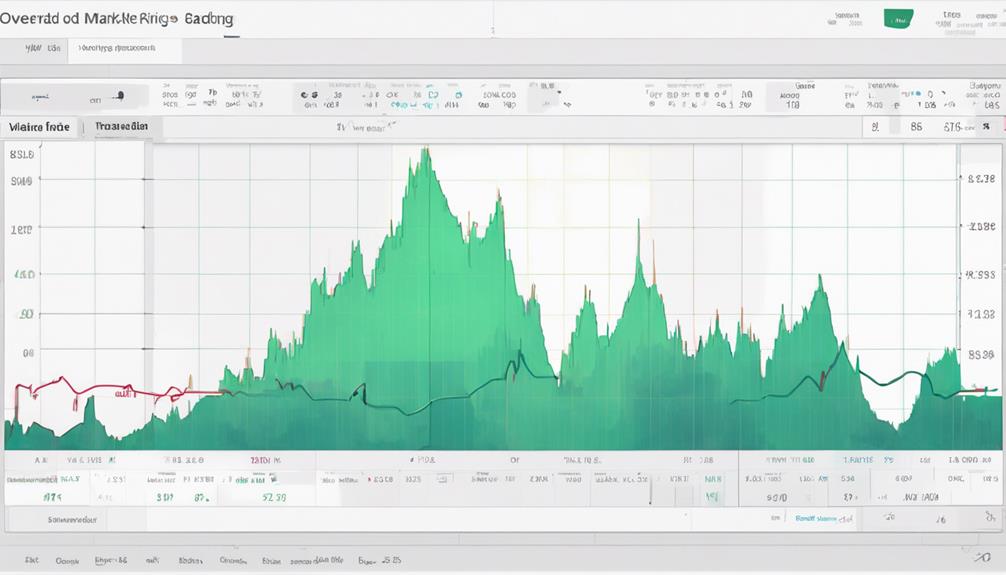
Standard deviation serves as a fundamental tool for traders in evaluating and quantifying risk within the financial markets. When it comes to risk assessment and trading decisions, standard deviation plays an important role. Here are some key points to keep in mind:
- Assessing Risk Tolerance: Standard deviation helps traders understand the level of risk associated with different assets, allowing them to align their investments with their risk tolerance.
- Comparing Asset Volatility: By analyzing standard deviation, traders can compare the volatility of various assets and make more informed decisions about portfolio diversification.
- Setting Stop-Loss Levels: Understanding standard deviation is vital for setting appropriate stop-loss levels, which are essential for managing risks effectively in trading.
- Predicting Price Movements: Traders can use standard deviation to gauge potential price movements, enabling them to anticipate market fluctuations and adjust their strategies accordingly.
Incorporating standard deviation into risk assessment processes empowers traders to navigate market volatility and make well-informed trading decisions.
Utilizing Standard Deviation in Trading Strategies
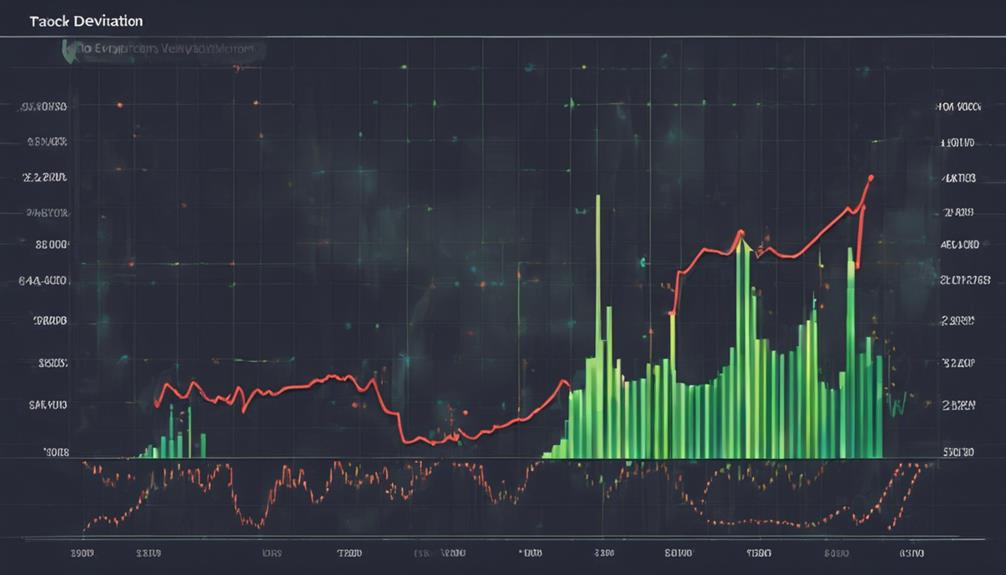
Incorporating insights derived from standard deviation analysis enhances traders' ability to optimize their trading strategies by effectively managing risk and capitalizing on market volatility. Standard deviation serves as a fundamental tool for risk vs return analysis in trading strategies, allowing traders to evaluate historical volatility and make informed decisions.
By utilizing standard deviation, traders can implement strategies such as Bollinger Bands, trend identification, and setting stop loss levels to navigate market fluctuations successfully. Understanding standard deviation is key to comprehending price swings in the market and adjusting strategies accordingly. It enables traders to assess market volatility, leading to more effective risk management and strategic adjustments.
Traders rely on standard deviation not only to manage risk but also to capitalize on opportunities presented by market volatility. By integrating standard deviation into their trading strategies, traders can enhance their overall performance and make well-informed decisions in dynamic market conditions.
Standard Deviation for Portfolio Diversification
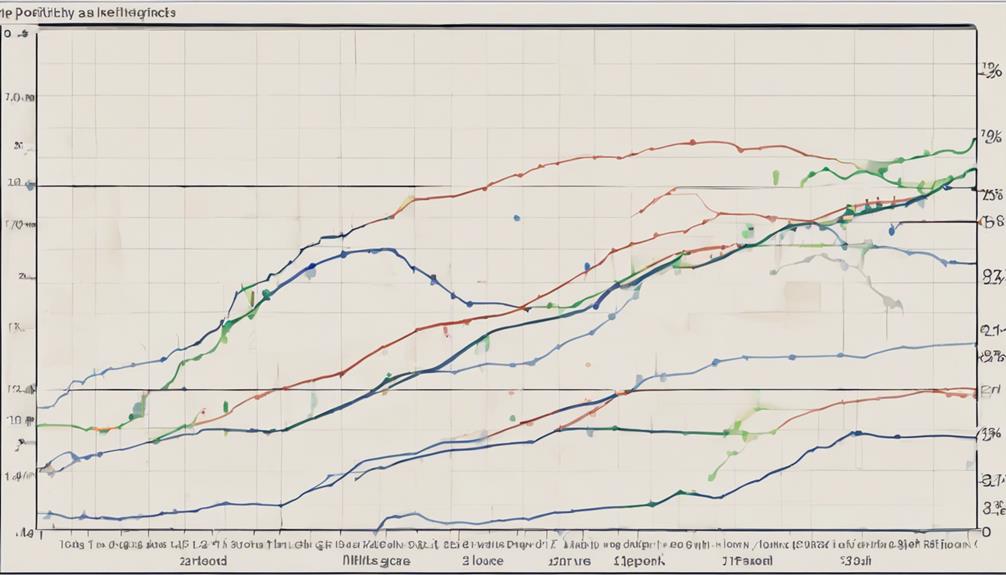
Utilizing standard deviation in portfolio diversification is essential for spreading risk across various assets.
By analyzing the standard deviations of different investments, investors can effectively manage and minimize overall portfolio volatility.
Balancing assets with varying standard deviations allows for optimizing risk-adjusted returns, leading to a well-diversified and resilient investment strategy.
Diversification Benefits With SD
Diversification benefits with standard deviation become evident when strategically allocating assets to mitigate risk across a portfolio. By incorporating assets with different standard deviations and lower correlations, investors can enhance diversification benefits. Understanding the correlation between assets is essential in reducing overall portfolio risk.
Varied standard deviations among assets play a key role in spreading risk effectively. When each asset's standard deviation is considered, a well-balanced portfolio can be constructed to optimize risk-adjusted returns.
- Strategic allocation of assets
- Incorporating assets with different standard deviations
- Lower correlation between assets
- Creating a well-balanced portfolio for optimized risk-adjusted returns
Risk Mitigation Using SD
When managing a portfolio, the utilization of standard deviation for risk mitigation is a vital strategy that aids in balancing volatility across various assets. Portfolio diversification based on standard deviation helps spread risk by allocating investments across assets with different volatility levels.
By analyzing standard deviation values for each asset, investors can adjust allocations to balance risk exposure and potentially improve returns. Assets with higher standard deviations may require smaller allocations in a diversified portfolio to mitigate risk, while those with lower standard deviations can offer stability and serve as a hedge against the volatility of higher-risk assets.
This understanding of standard deviation is essential for constructing a well-diversified portfolio that aligns with an investor's risk tolerance and financial objectives.
Standard Deviation Vs Price Volatility

Analyzing market dynamics through the lens of standard deviation provides a nuanced understanding of the relationship between price volatility and statistical dispersion. Standard deviation quantifies price volatility by measuring the dispersion of prices around the average, where a higher standard deviation indicates increased market volatility with wider price fluctuations.
This relationship between standard deviation and price volatility allows traders to gauge the range of potential price movements, aiding in risk evaluation associated with trading. Some key points to contemplate in this scenario include:
- Standard deviation reflects the extent of price fluctuations in the market.
- Higher standard deviation implies a greater level of market volatility.
- Understanding standard deviation helps traders anticipate the potential range of price movements.
- Standard deviation serves as a valuable tool for evaluating the level of risk posed by price volatility in trading.
Standard Deviation in Risk Management
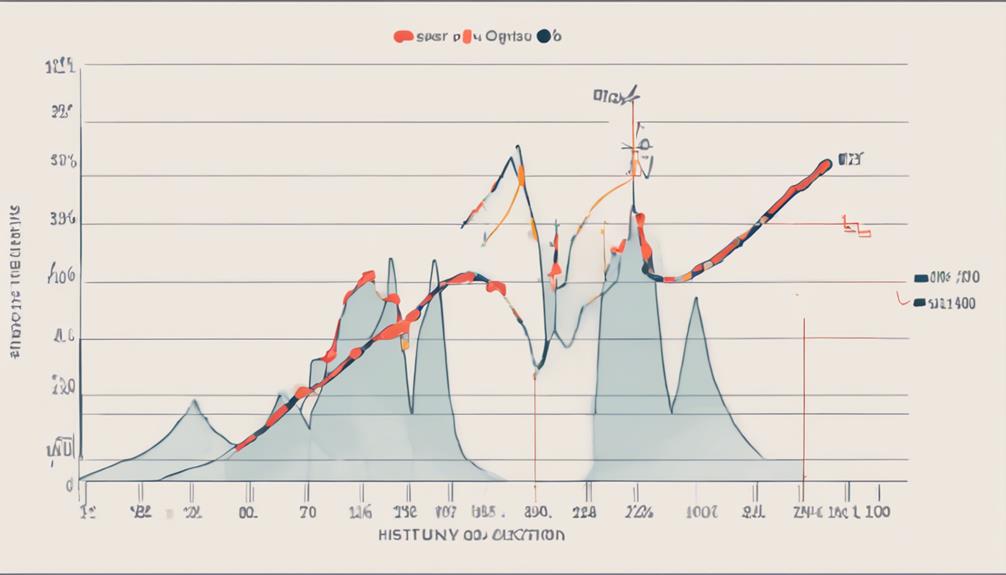
Employing standard deviation as a pivotal metric in risk management enables traders to meticulously assess the potential variability of returns around the mean average, facilitating informed decision-making processes. Standard deviation plays an essential role in understanding the level of risk and market volatility, providing traders with valuable insights to make well-informed trading decisions.
By analyzing standard deviation, traders can determine appropriate stop-loss levels, helping them manage risks effectively in the dynamic market environment. Moreover, incorporating standard deviation in risk management strategies allows for a thorough evaluation of market conditions and potential price movements. This integration enhances risk assessment capabilities, leading to more calculated and informed trading decisions.
Traders who utilize standard deviation as part of their risk management framework are better equipped to navigate the uncertainties of the market and adapt their strategies based on the insights derived from this statistical measure.
Applications of Standard Deviation in Trading
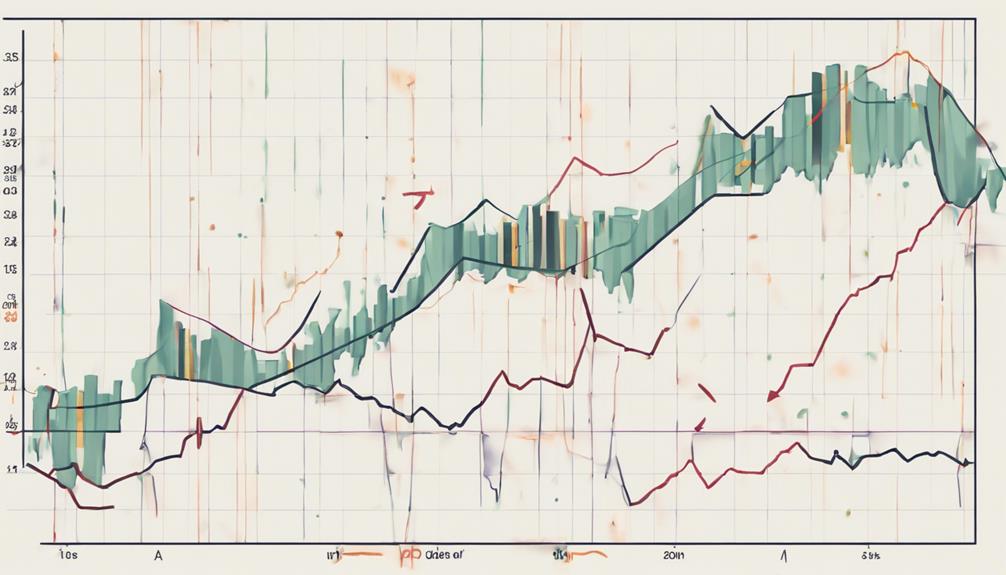
Standard deviation in trading plays a vital role in evaluating risk and predicting volatility by quantifying the variability of price movements around the mean. This statistical measure assists traders in determining potential price ranges based on historical data and market expectations.
Risk Assessment Using SD
Quantifying risk tolerance in trading is essential, with standard deviation serving as a key tool for evaluating variability relative to the mean average. When gauging risk using standard deviation, traders can:
- Determine the level of market volatility and adjust strategies accordingly.
- Establish appropriate stop-loss levels based on historical data analysis.
- Enhance risk management practices by evaluating the consistency of data.
- Identify trend reversals and manage market risk effectively.
Volatility Prediction With SD
Utilizing standard deviation in trading enables investors to anticipate market volatility trends and make informed decisions to optimize their trading strategies.
In options trading, implied volatility plays an important role in predicting potential stock price movements within standard deviation ranges. By understanding standard deviation, investors can better select appropriate strike prices, especially in the context of high implied volatility scenarios where probabilities for strikes expiring in-the-money or out-of-the-money are greatly influenced.
Implied volatility directly impacts trading strategies by shaping expectations of future stock movements, while standard deviation serves as a valuable tool for evaluating market perception and determining probabilities in options trading.
Standard Deviation for Market Analysis
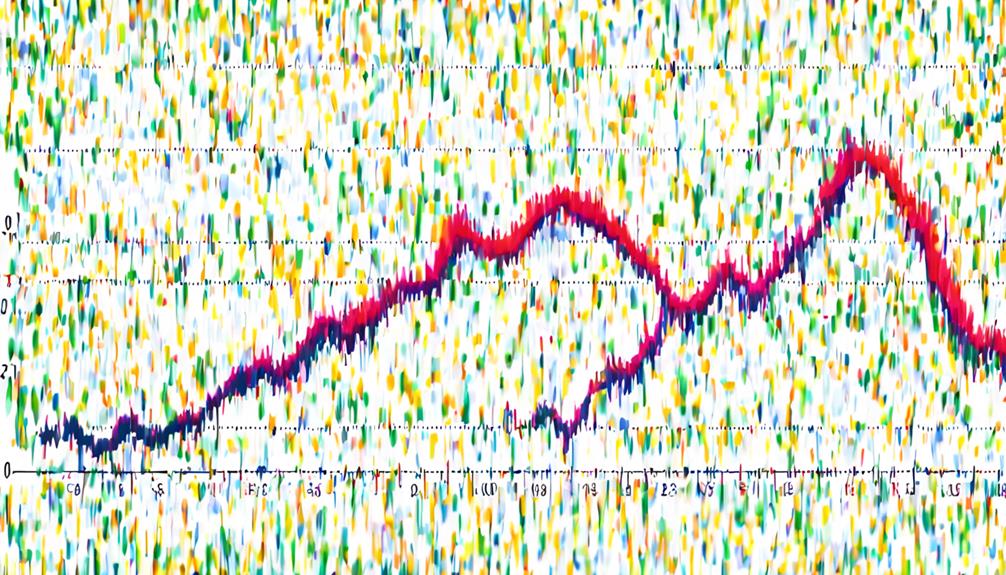
In the domain of market analysis, the measurement of price dispersion from the average serves as a pivotal indicator for understanding market volatility. When utilizing standard deviation for market analysis, several key aspects come into play:
- Quantifying Price Dispersion: Standard deviation quantifies how prices deviate from the average, providing insight into the market's behavior.
- Evaluating Market Volatility: By analyzing standard deviation, traders can gauge the level of market volatility based on historical price movements.
- Risk Evaluation: Traders use standard deviation as a tool for evaluating the potential risks associated with certain price fluctuations.
- Understanding Price Movements: High standard deviation values indicate higher market volatility, reflecting wider price ranges and increased uncertainty.
Standard Deviation for Forecasting Trends
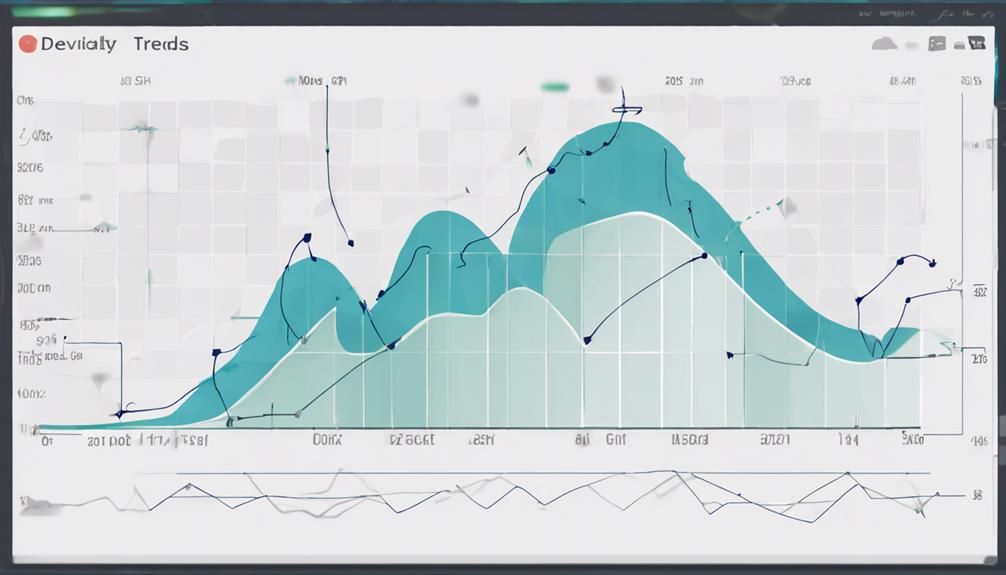
Standard deviation serves as an essential tool in forecasting trends by measuring the dispersion of price movements around the average. Traders leverage standard deviation to gauge the potential range of outcomes and anticipate market behavior. Analyzing standard deviation aids in identifying periods of heightened or diminished market volatility, offering insights into potential trend shifts.
Forecasting trends using standard deviation involves evaluating the level of uncertainty and risk present in the market. By monitoring standard deviation trends over time, traders can discern the strength and direction of market movements more effectively. This statistical measure not only helps in understanding the historical price variability but also provides a framework for anticipating future trends based on the observed patterns of dispersion.
Utilizing standard deviation as part of trend forecasting strategies equips traders with valuable information to make informed decisions in response to evolving market conditions.
Standard Deviation for Identifying Opportunities
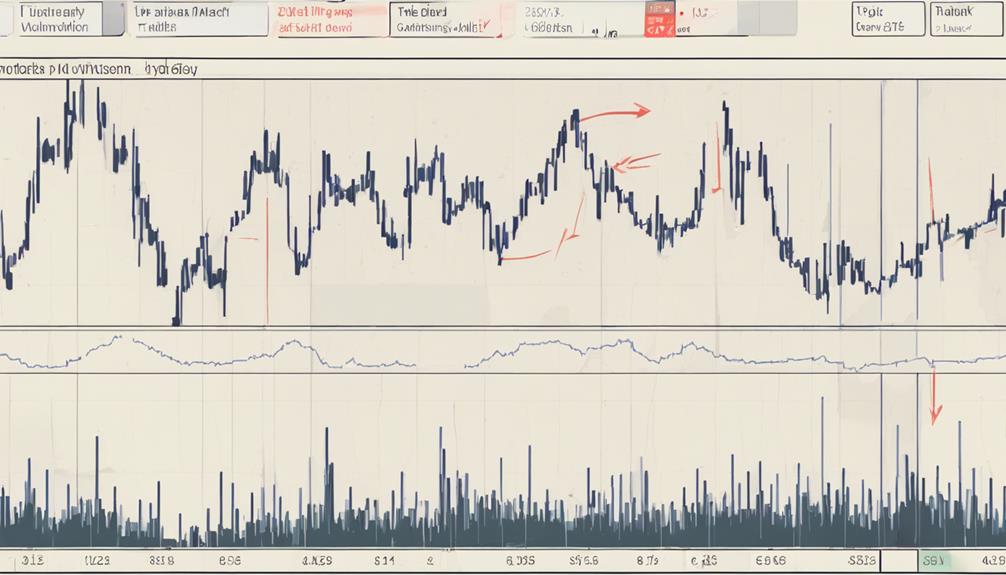
Forecasting trends with standard deviation provides traders with valuable insights into potential market shifts. This analytical tool can also be instrumental in identifying key trading opportunities by measuring price dispersion from the average. By understanding standard deviation in trading, traders can capitalize on various opportunities that arise due to market volatility.
Here are some ways standard deviation can help in identifying trading opportunities:
- Volatility Assessment: High standard deviation indicates increased price volatility, which can present lucrative trading opportunities for those willing to take on higher risk.
- Trend Reversal Signals: Sudden spikes in standard deviation may indicate a potential trend reversal, offering traders a chance to enter or exit positions strategically.
- Risk Management: Analyzing standard deviation allows traders to gauge the risk associated with different trading opportunities, enabling informed decision-making.
- Profit Maximization: Utilizing standard deviation data helps traders identify ideal entry and exit points, maximizing profit potential in various market conditions.
Standard Deviation Limitations and Considerations
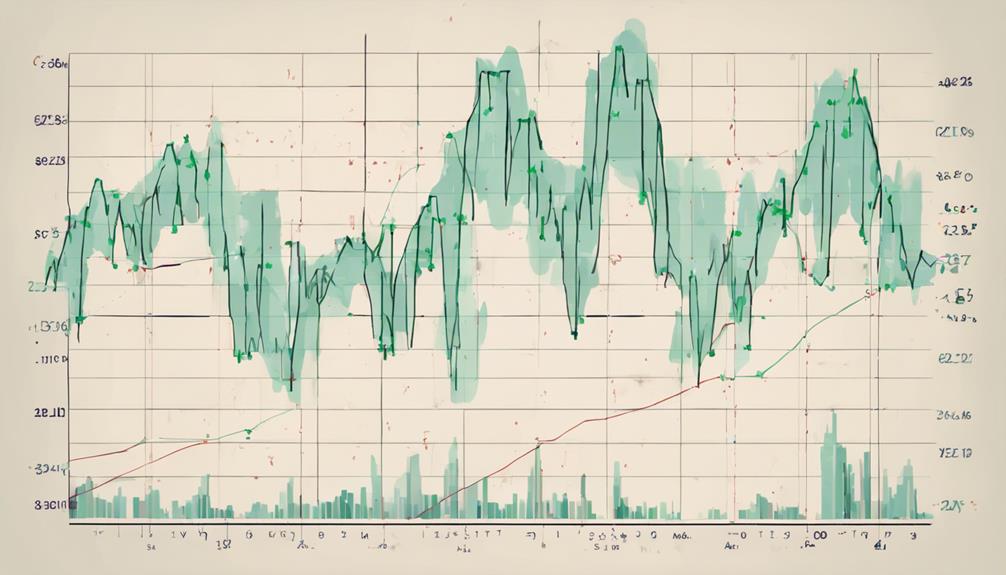
When considering the application of standard deviation in trading strategies, it is imperative to recognize the inherent limitations and key considerations that shape its effectiveness in managing market volatility. Standard deviation relies on the assumption of a normal distribution, which may not always accurately reflect extreme market events, leading to potential inaccuracies in evaluating volatility.
Additionally, historical standard deviation data might not always offer precise predictions of future market volatility, highlighting the challenge of relying solely on this metric for decision-making. Continuous monitoring and adjustment are essential when using standard deviation, supplementing its insights with confirmation from other indicators to enhance predictive accuracy.
Incorporating standard deviation into a holistic trading strategy requires a deep understanding of broader market dynamics to contextualize its implications effectively. Recognizing the limitations of standard deviation underscores the critical importance of robust risk management strategies in trading practices, as it serves as a tool within a wider framework rather than a standalone solution for managing market volatility.
Frequently Asked Questions
How to Use Standard Deviation to Measure Volatility?
Volatility measurement is vital in risk assessment and trading strategies. Statistical analysis of standard deviation quantifies price dispersion, providing insights into market fluctuations.
How to Use Standard Deviation for Trading?
In trading, standard deviation is an essential tool for evaluating market dynamics. By analyzing price movements through statistical analysis, traders can refine their strategies for risk management.
Integrating standard deviation into trading methodologies allows for a more thorough assessment of potential price fluctuations. This data-driven approach enhances decision-making processes and aids in identifying trends within the market.
Utilizing standard deviation effectively can optimize trading strategies and improve overall performance.
How Do You Understand Market Volatility?
Understanding market volatility involves analyzing historical data to assess price fluctuations. Traders employ volatility indices to measure market stability and gauge risk levels.
How Do You Analyze Market Volatility?
Volatility analysis involves evaluating market fluctuations to identify trends and manage risks through statistical modeling.
By scrutinizing price movements, traders can make informed decisions based on market sentiment and potential price shifts.
Understanding volatility is essential for setting effective risk management strategies and seizing trading opportunities.
Analyzing market volatility requires a data-driven approach, enabling traders to navigate uncertainties and optimize their trading outcomes.
Conclusion
To sum up, it is crucial to take into account that standard deviation is a powerful tool in understanding market volatility in trading. By calculating and interpreting standard deviation values, traders can assess risk, analyze markets, forecast trends, and identify opportunities for profit.
However, it is essential to acknowledge the limitations and complexities of standard deviation in order to make informed trading decisions. As the saying goes, 'knowledge is power', and utilizing standard deviation effectively can empower traders to navigate the volatile market with confidence.


